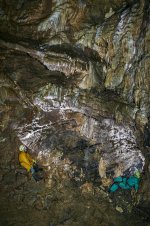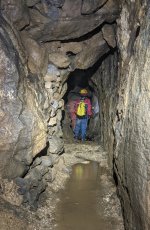langcliffe
Well-known member
How's this for a classic fault plane? We have two fault walls separated by three metres of fault breccia. The one on the left can only be seen in the bottom left of the photograph. The one on the right is reet well polished. Knowing where it is, I suspect that it is a thrust fault with the hanging wall on the right, but I am happy to be corrected.
This ain't a wezzit, but I know that quite a few of you will have passed this feature.

This ain't a wezzit, but I know that quite a few of you will have passed this feature.






